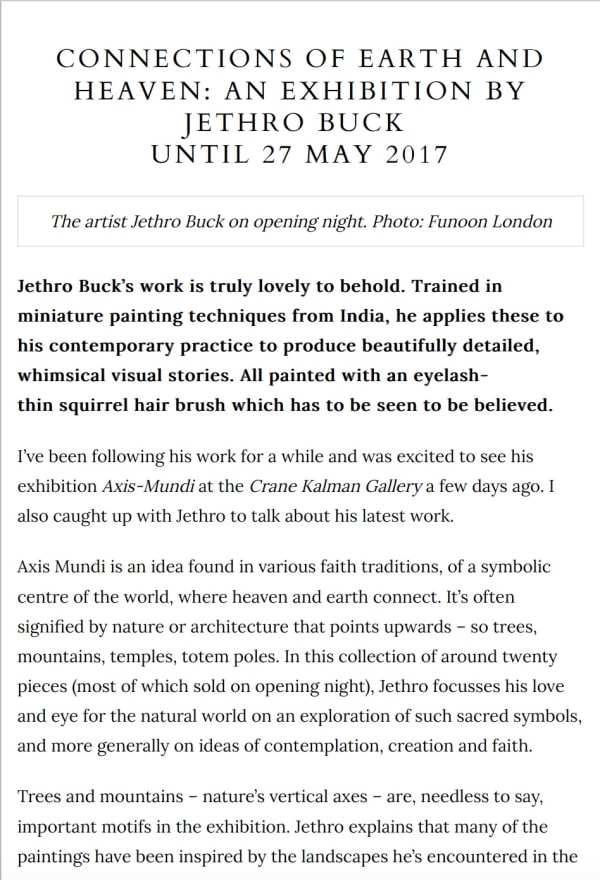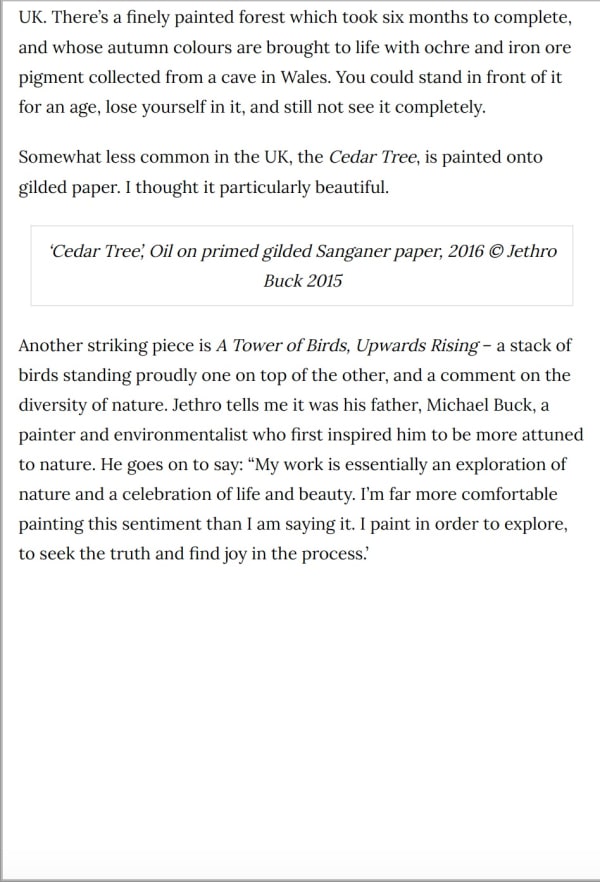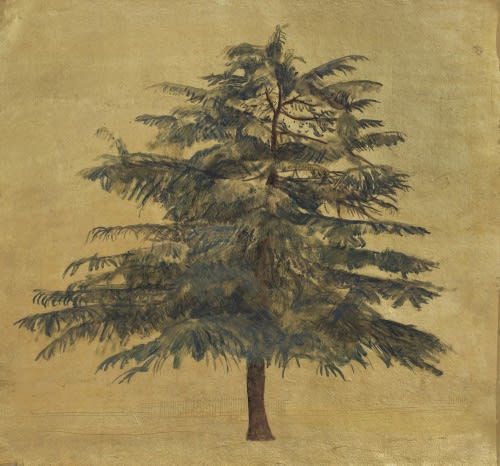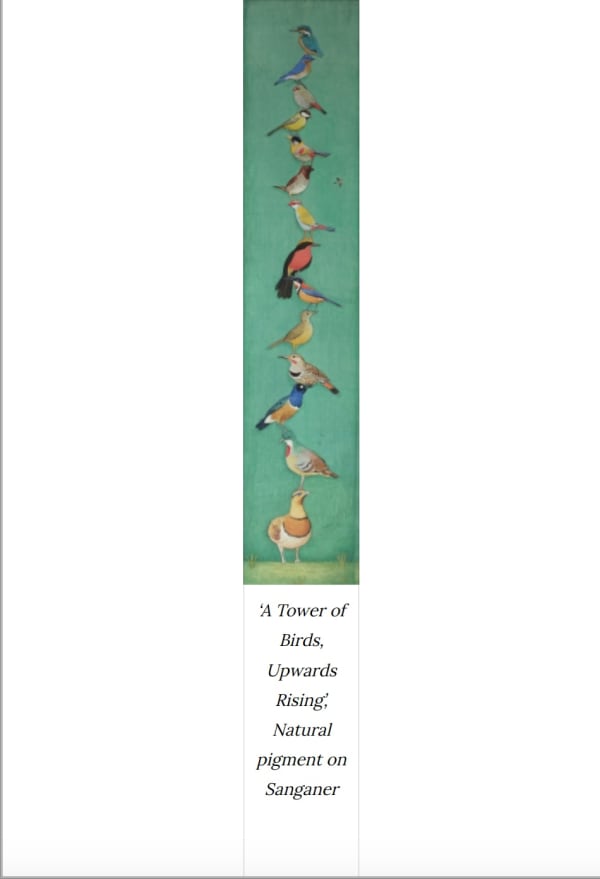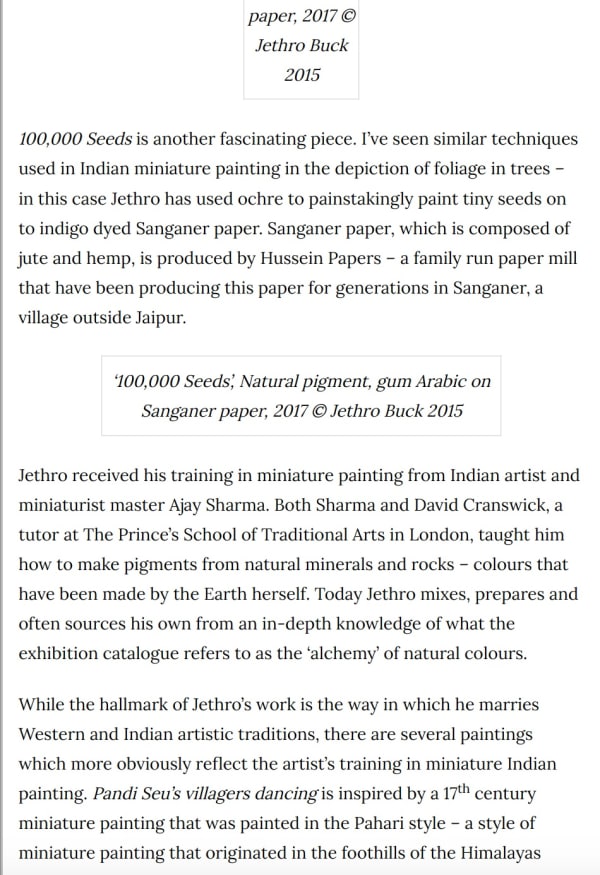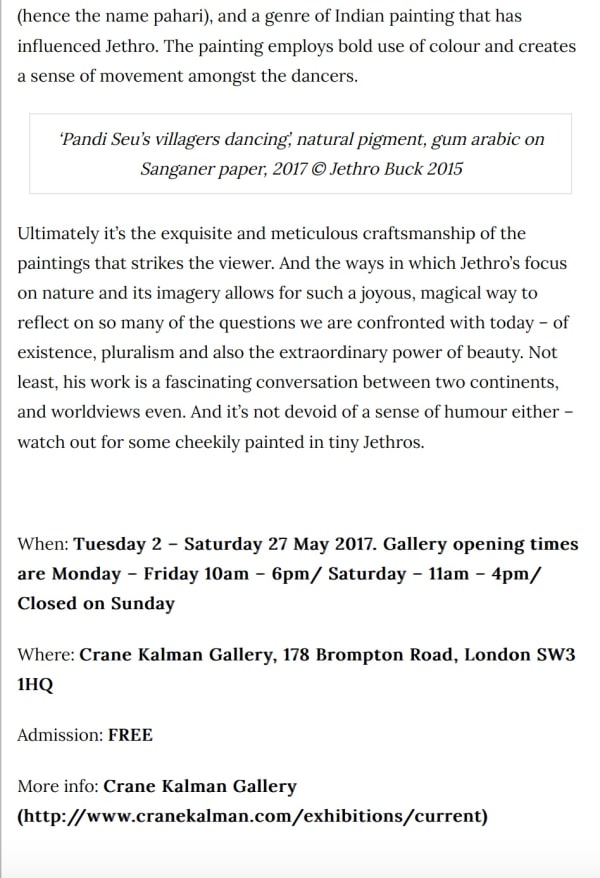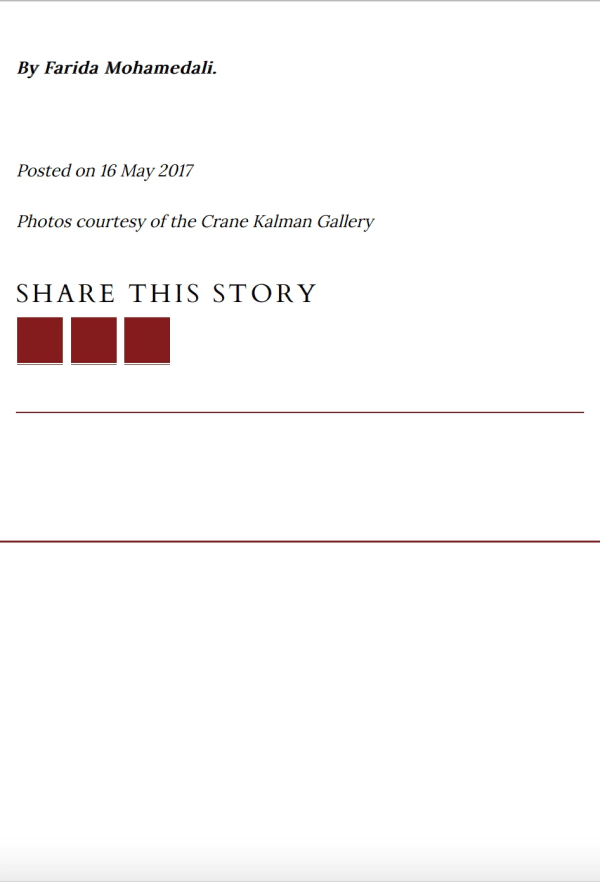Jethro Buck’s work is truly lovely to behold. Trained in miniature painting techniques from India, he applies these to his contemporary practice to produce beautifully detailed, whimsical visual stories. All painted with an eyelash-thin squirrel hair brush which has to be seen to be believed.
I’ve been following his work for a while and was excited to see his exhibition Axis-Mundi at the Crane Kalman Gallery a few days ago. I also caught up with Jethro to talk about his latest work.
Axis Mundi is an idea found in various faith traditions, of a symbolic centre of the world, where heaven and earth connect. It’s often signified by nature or architecture that points upwards – so trees, mountains, temples, totem poles. In this collection of around twenty pieces (most of which sold on opening night), Jethro focusses his love and eye for the natural world on an exploration of such sacred symbols, and more generally on ideas of contemplation, creation and faith.
Trees and mountains – nature’s vertical axes – are, needless to say, important motifs in the exhibition. Jethro explains that many of the paintings have been inspired by the landscapes he’s encountered in the UK. There’s a finely painted forest which took six months to complete, and whose autumn colours are brought to life with ochre and iron ore pigment collected from a cave in Wales. You could stand in front of it for an age, lose yourself in it, and still not see it completely.
Somewhat less common in the UK, the Cedar Tree, is painted onto gilded paper. I thought it particularly beautiful.
Another striking piece is A Tower of Birds, Upwards Rising – a stack of birds standing proudly one on top of the other, and a comment on the diversity of nature. Jethro tells me it was his father, Michael Buck, a painter and environmentalist who first inspired him to be more attuned to nature. He goes on to say: “My work is essentially an exploration of nature and a celebration of life and beauty. I’m far more comfortable painting this sentiment than I am saying it. I paint in order to explore, to seek the truth and find joy in the process.’
100,000 Seeds is another fascinating piece. I’ve seen similar techniques used in Indian miniature painting in the depiction of foliage in trees – in this case Jethro has used ochre to painstakingly paint tiny seeds on to indigo dyed Sanganer paper. Sanganer paper, which is composed of jute and hemp, is produced by Hussein Papers – a family run paper mill that have been producing this paper for generations in Sanganer, a village outside Jaipur.
ethro received his training in miniature painting from Indian artist and miniaturist master Ajay Sharma. Both Sharma and David Cranswick, a tutor at The Prince’s School of Traditional Arts in London, taught him how to make pigments from natural minerals and rocks – colours that have been made by the Earth herself. Today Jethro mixes, prepares and often sources his own from an in-depth knowledge of what the exhibition catalogue refers to as the ‘alchemy’ of natural colours.
While the hallmark of Jethro’s work is the way in which he marries Western and Indian artistic traditions, there are several paintings which more obviously reflect the artist’s training in miniature Indian painting. Pandi Seu’s villagers dancing is inspired by a 17th century miniature painting that was painted in the Pahari style – a style of miniature painting that originated in the foothills of the Himalayas (hence the name pahari), and a genre of Indian painting that has influenced Jethro. The painting employs bold use of colour and creates a sense of movement amongst the dancers.
Ultimately it’s the exquisite and meticulous craftsmanship of the paintings that strikes the viewer. And the ways in which Jethro’s focus on nature and its imagery allows for such a joyous, magical way to reflect on so many of the questions we are confronted with today – of existence, pluralism and also the extraordinary power of beauty. Not least, his work is a fascinating conversation between two continents, and worldviews even. And it’s not devoid of a sense of humour either – watch out for some cheekily painted in tiny Jethros.
